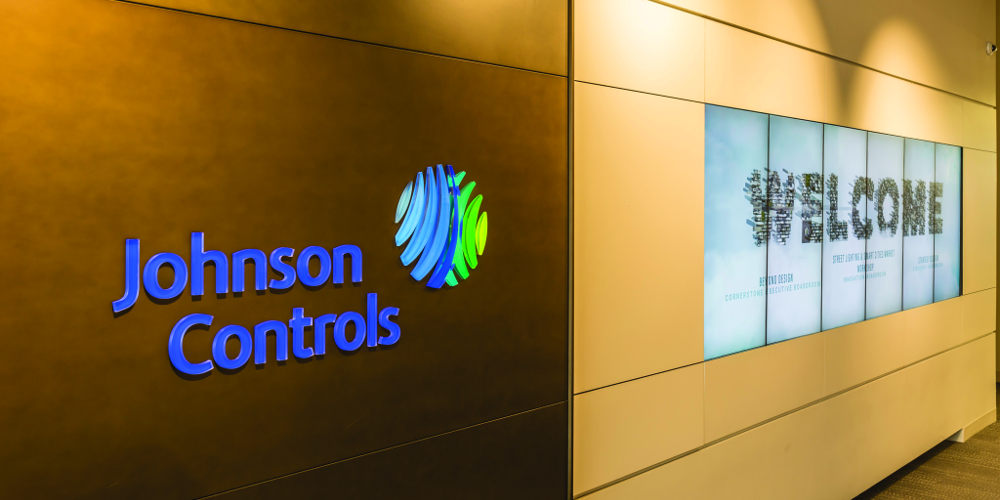Exclusive: Johnson Controls Finally Sheds Light on Tyco Merger, Reveals What’s Next
SSI gives the industry its first in-depth look into the Johnson Controls-Tyco merger and what it means for both the supplier and installer channel sectors.

Looking at a bigger picture for Tyco-branded products, what do you view as some of the top challenges?
GRINSTEAD: Our biggest challenge is ensuring we accelerate our time to market. Channel expectations for new products are at a higher level of frequency than may have previously been the case, particularly in areas like intrusion and the IoT home and building automation spaces. The product development and delivery cycles are increasingly more akin to the expectations of the consumer electronics market.
The other challenge I would view as an opportunity, which is the expansion of our markets beyond North America. We’ve got to align our resources and develop our channels to leverage that capability. We will unequivocally continue to evolve, develop and support the North American market and take that from strength to strength.
As an organization we have to work out how to leverage that capability and learnings we’ve developed in the North American market to create value in other geographies.

What would you identify as the top two challenges facing you on the security integration side?
HAGA: The one that comes to mind first is technology changes very rapidly now. It’s very difficult to keep our teams developed and trained around that new technology. We’re working to find new ways to do that, such as through a personal device that helps walk you through new technology and manage certain situations.
The CoE model is based around providing information to our teams that are going out to execute projects. The strategy is in training and development, and managing that through the web as technology rapidly changes.The second one is as technology changes, the characteristics of the team will need to change.
If you look at the Millennials and their ability to change with the technology, to adjust and adapt, we’ve got to make sure we’re nimble and can do that too. That’s difficult, but not impossible, in a large organization. You have to think outside the box and find ways to recruit and attract talent.
Then the challenge is the talent you have, getting them to change and look at things a new way. These are challenges that depending on who solves and finds a way to be quicker and nimble will turn it into an opportunity to do better in the marketplace.There’s a big push for integrators to attach recurring revenue services to products.
Are you developing recurring revenue hooks to address that?
GRINSTEAD: Absolutely. We are always looking for opportunities to create high levels of value for our channel partners, the systems integrators, and the installers. Over the coming year we will be deploying new solutions that allow our systems integrator partners to create recurring revenue opportunities for themselves. Certainly in the video and access control spaces, and we’re looking at opportunities to do that in the intrusion space as well.
How much emphasis is there on recurring revenue on the integration side? Is a recurring revenue component being folded into every project?
HAGA: We would want that recurring revenue folded into every project but the reality is it’s not available at the beginning of every project. It may come when the building is turned over to the new owner. We still provide traditional services such as monitoring and maintenance services to facilities, fire alarm inspections, audits, those types of services.
But we’re working to bring more services that would help that recurring model from what we now call our professional services team. On many of the enterprise, high-level systems we are managing the customer’s server, managing the software pushes out to devices in the field, the upgrade of the server software, any IT or related issues for the customer.
We’re trying to expand those services, and as technology and the marketplace changes we’re trying to be thoughtful and see what new services our customers need.
As part of that, are you leveraging technology to diagnose and fix issues without having to roll trucks as often?
We’re absolutely going to focus on that. There’s more accessibility to everything from security to video to fire panels remotely, we see huge value in that. We think our customer sees huge value. If they have an issue with their access system or intrusion system, and we can remotely diagnose and correct that, No. 1 it’s the speed.
They don’t have the disruption of a technician interrupting their day-to-day operation. We have a group in the U.S. of about 60 people who are dedicated to that. They take the first-line calls from our customers, go through triage, try to connect and repair remotely. When our service technicians are dispatched, they have more information about what the actual problem could be. I see that gaining momentum in the future.

Looking forward, how do you believe the JCI/Tyco combination will outperform the competition?
GRINSTEAD: The confluence of the service delivery platforms the organizations had been independently working on is one. We are going to have this potentially ubiquitous service support platform that will allow the aggregation of the full portfolio of Johnson Controls product solutions across a facility.
Similarly, from a data management perspective, we will provide an unparalleled or unprecedented portfolio of data-gathering sensors across a building. The input from that capability is going to provide the opportunity to deliver and develop new services for our channels, building owners, building tenants that really no one else has to the same level of capability.
HAGA: The No. 1 advantage we have is the number of touchpoints we would have in that facility. As we look at what we would provide to a customer, let’s say if it’s a hospital, from the HVAC to the fire and sprinkler to the video and security; we can go in as an organized group, consolidated group, and bring value by being able to offer even a more complete service, a more competitive price.
We can use the same teams to execute the installation of that project, from program managers to project managers to people who are actually pulling the wire or installing the sprinkler system or HVAC. That gives us a competitive advantage.
What about competing against regional or local companies that maybe have more intimate touchpoints with the customer?
No doubt about it if you look at the smaller regional organizations, they have a very intimate relationship with their customers. But if you look at the way we’re organized we have that as well. We have our branches with probably more density in the marketplace than other providers. We have local service and installation technicians.
We have the local sales team. We have the local management. You can still be a large company and have that local touch and local face-time with your customers.
Are plans in place to splash a lot of high-profile marketing to make everyone aware of the new JCI?
GRINSTEAD: Marketing is a big opportunity for our business. It would be true to say we have not been a marketing organization to this point, certainly, from a security products perspective. You can expect to see us seeking to expand the knowledge and presence of our brands and capabilities in the market, and an increased spend in digital marketing and digital properties.
One of the areas there still needs to be some fairly significant work is our online and digital identity as an organization. That’s another area where we’re going to make significant investment over the months to come. From a corporate culture standpoint, what kind of commitment is there to be involved in the security industry through trade groups, standards, visibility at events, etc. as part of the community?
GRINSTEAD: We’re a committed member of the security community both in North America and globally. We participate actively on most if not all of the related trade organizations. That’s important both in terms of ensuring we stay connected to the industry and to our customers, and that wherever we can we participate actively in influencing the direction of the segment as well. We’re committed to the organization, not just to the segment, not just in terms of the products and solutions we deliver, but we believe it’s incumbent upon us to be an active participant in the industry bodies.
If you enjoyed this article and want to receive more valuable industry content like this, click here to sign up for our FREE digital newsletters!

Security Is Our Business, Too
For professionals who recommend, buy and install all types of electronic security equipment, a free subscription to Commercial Integrator + Security Sales & Integration is like having a consultant on call. You’ll find an ideal balance of technology and business coverage, with installation tips and techniques for products and updates on how to add to your bottom line.
A FREE subscription to the top resource for security and integration industry will prove to be invaluable.








